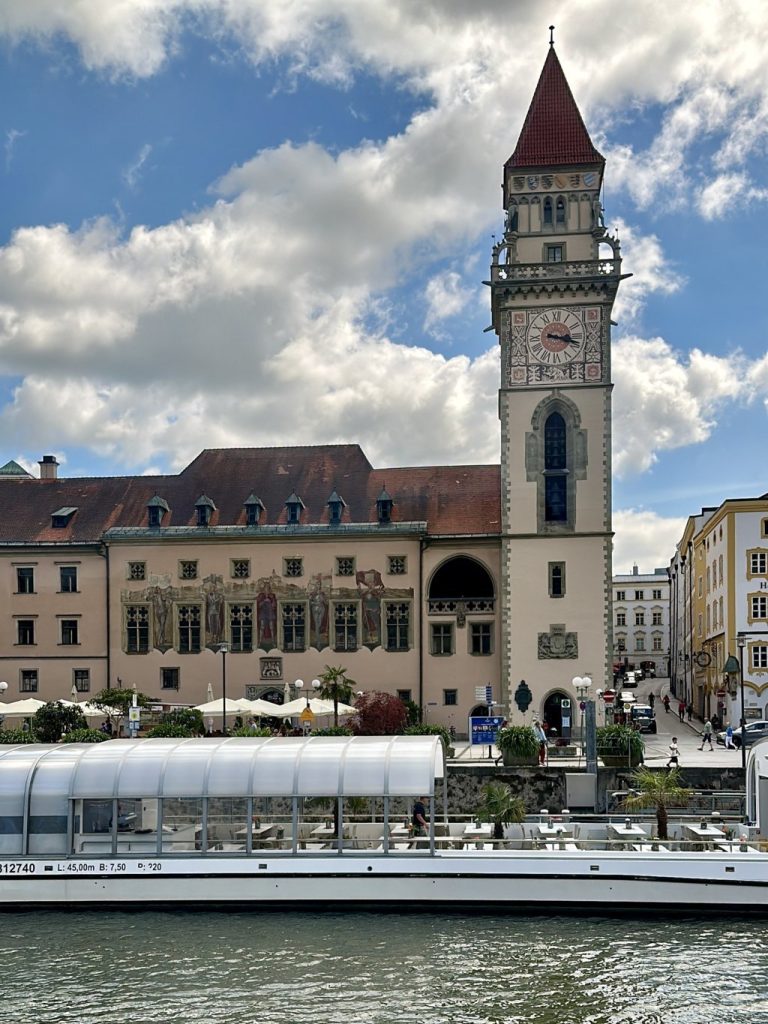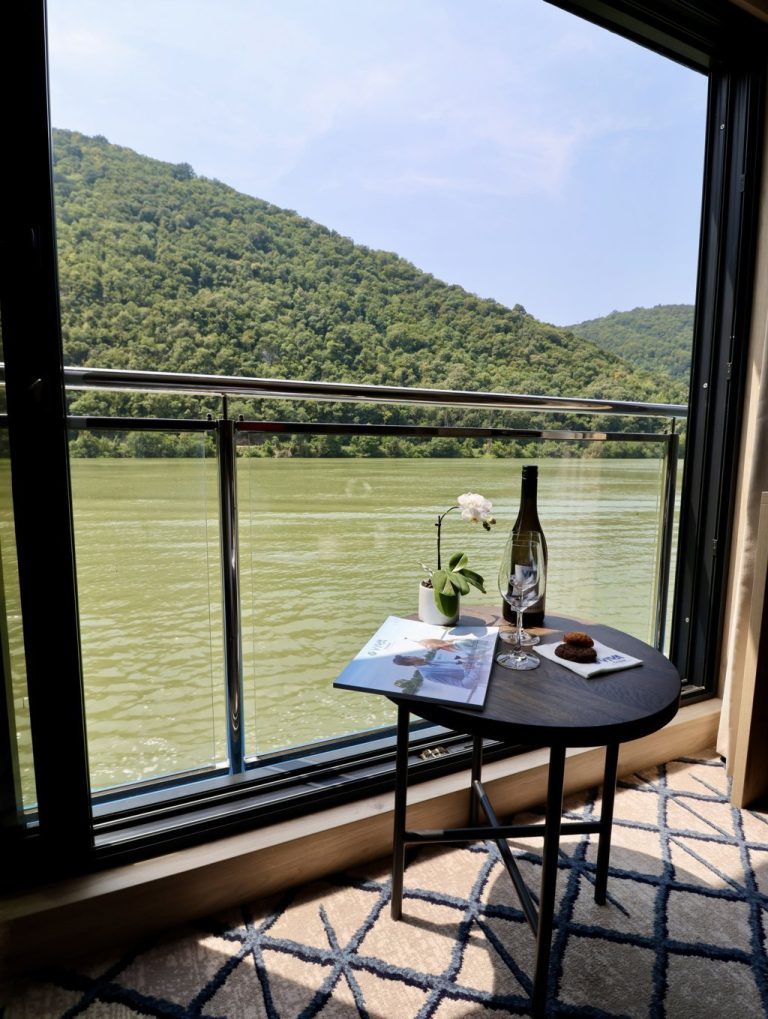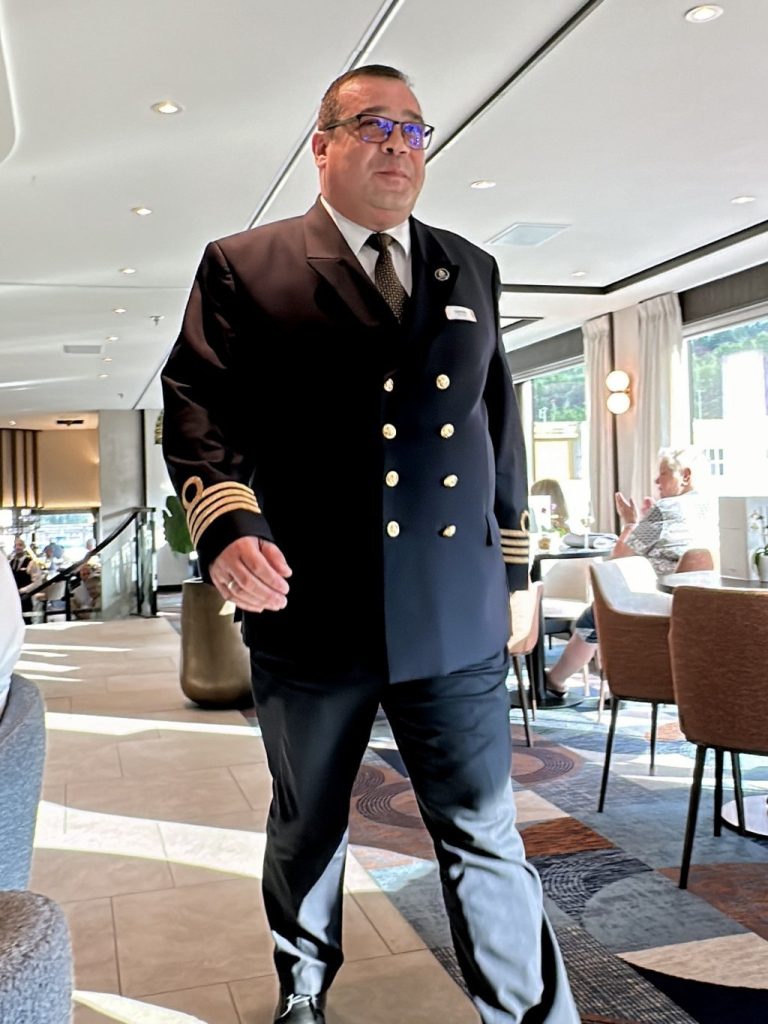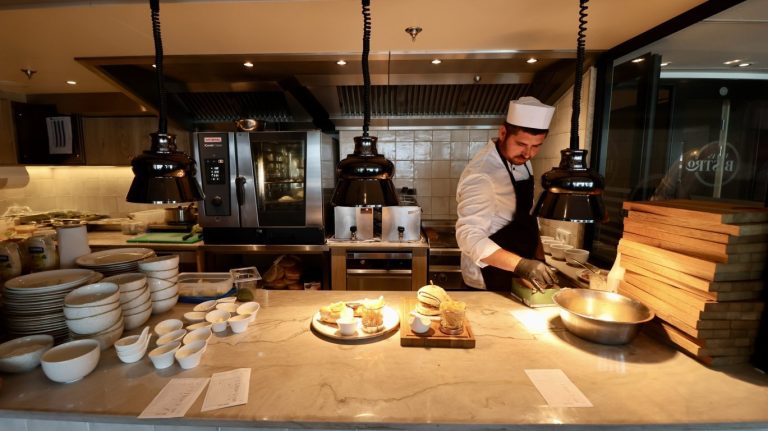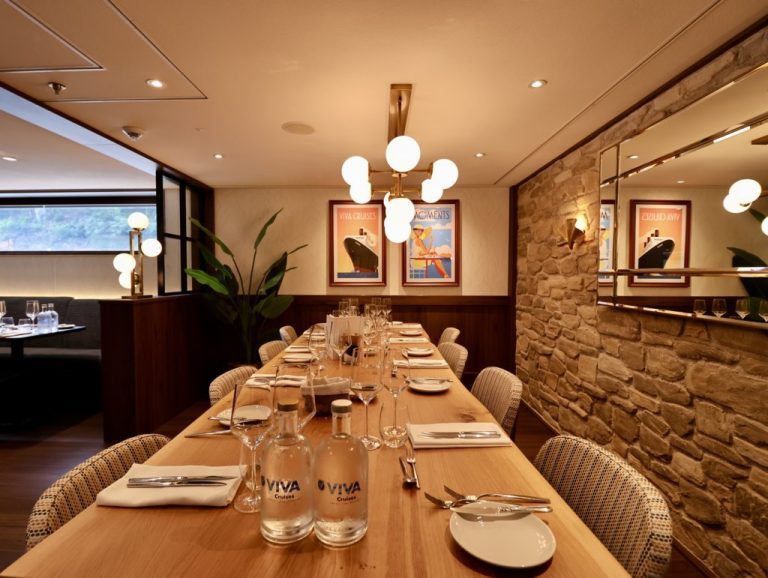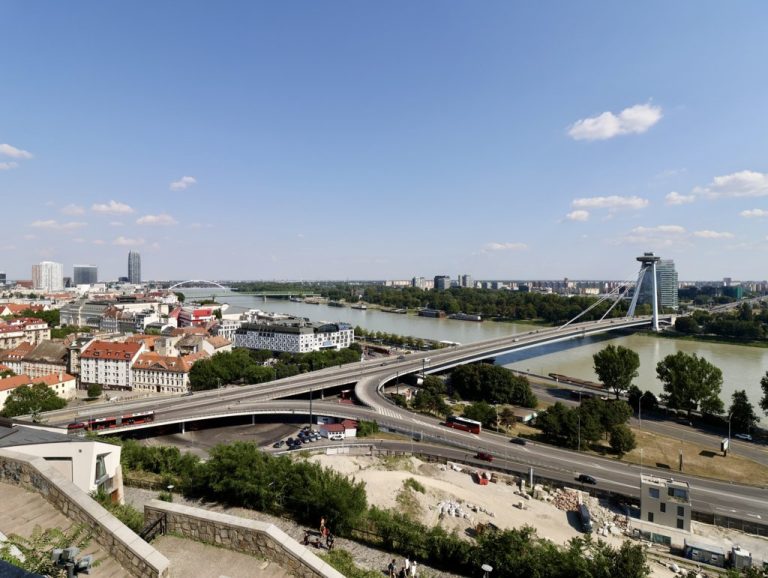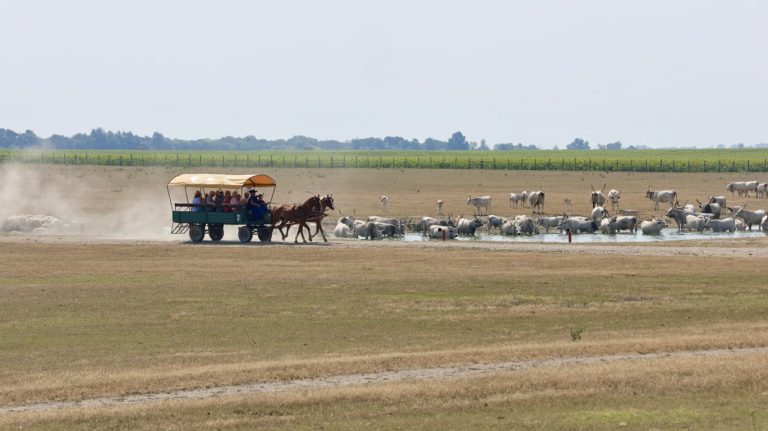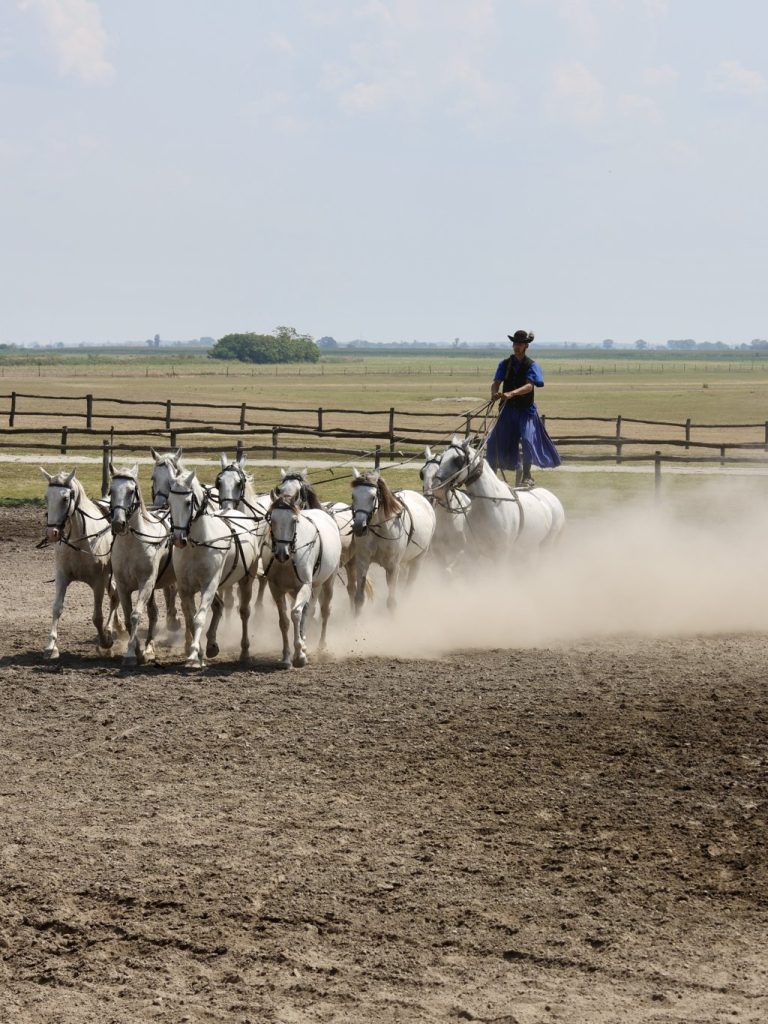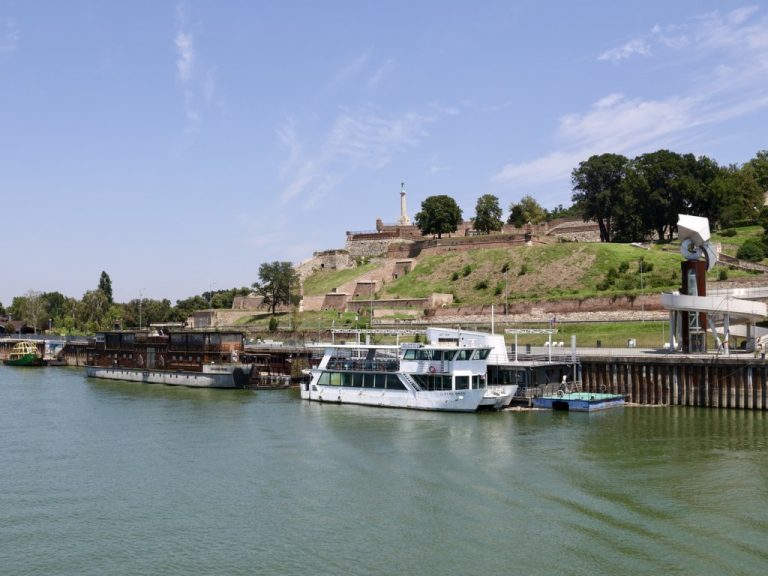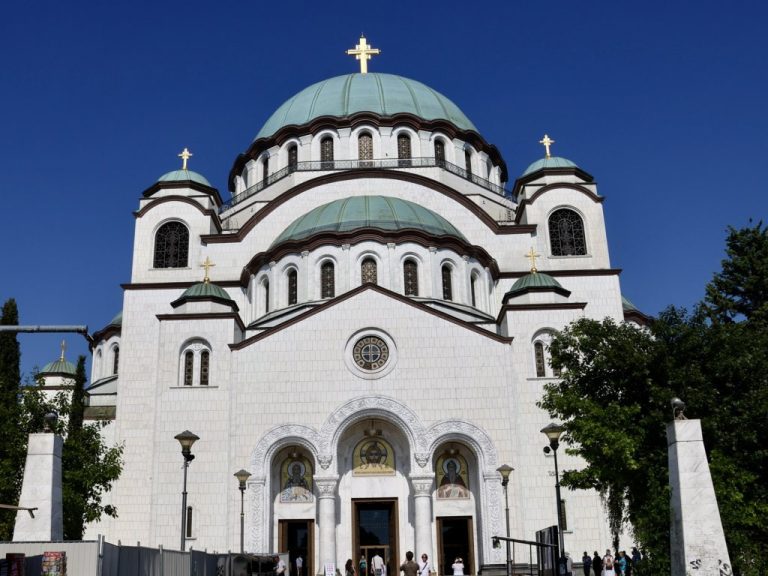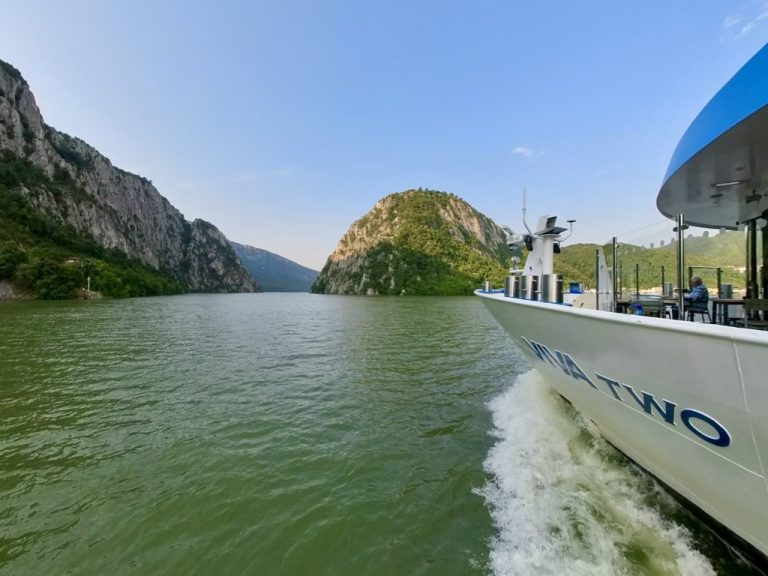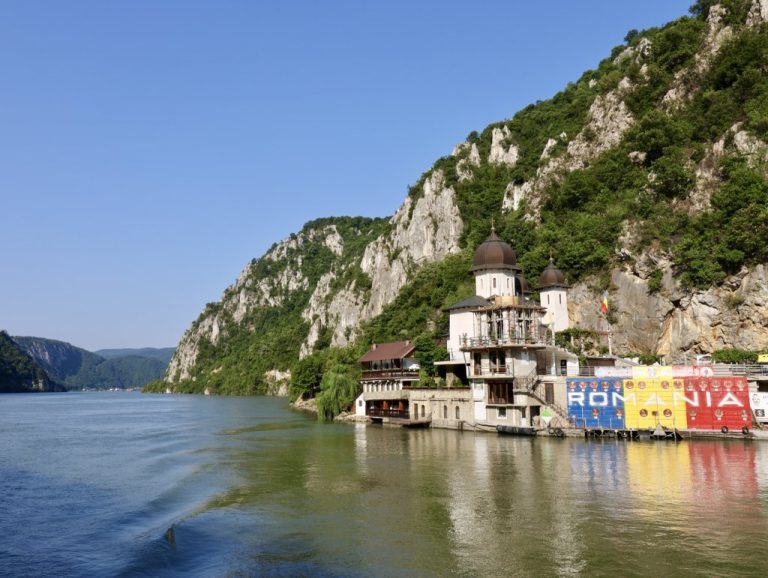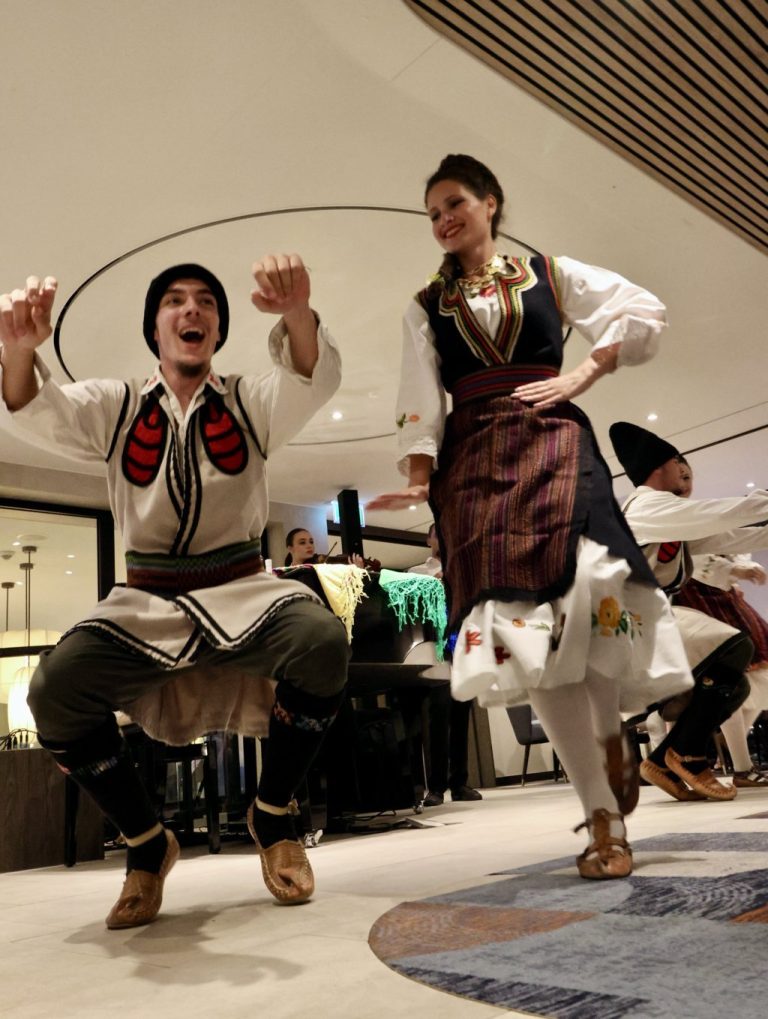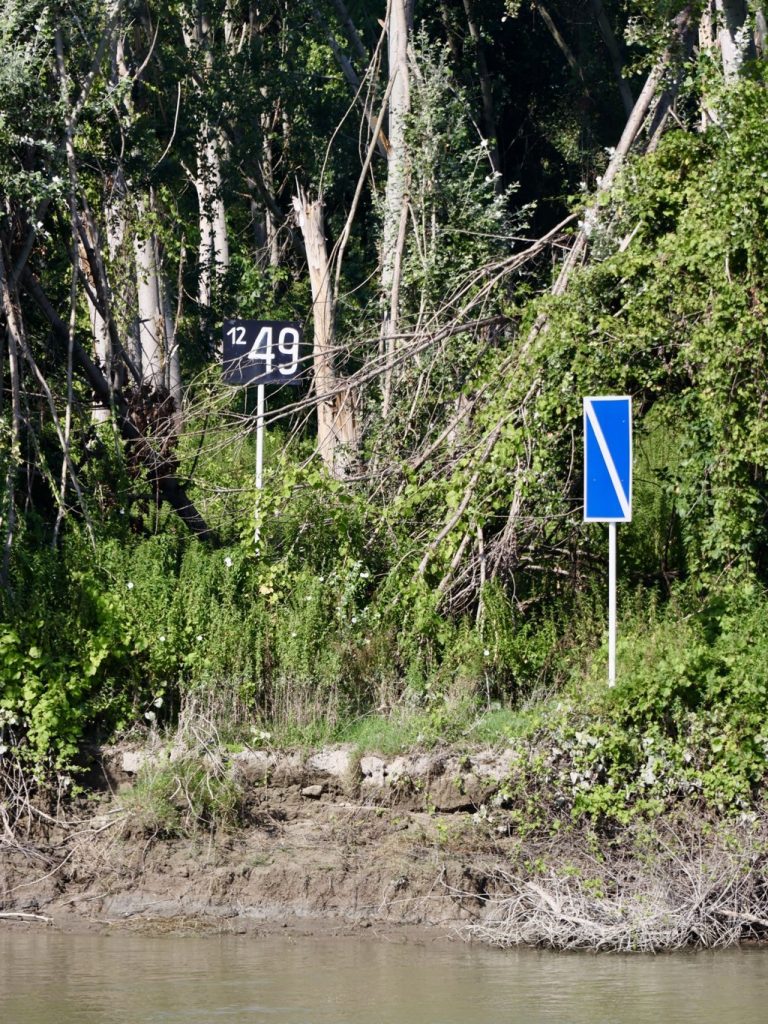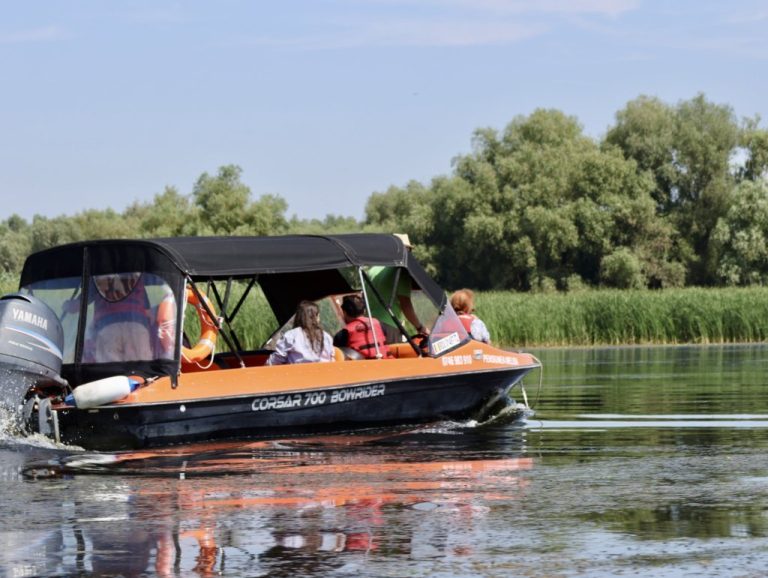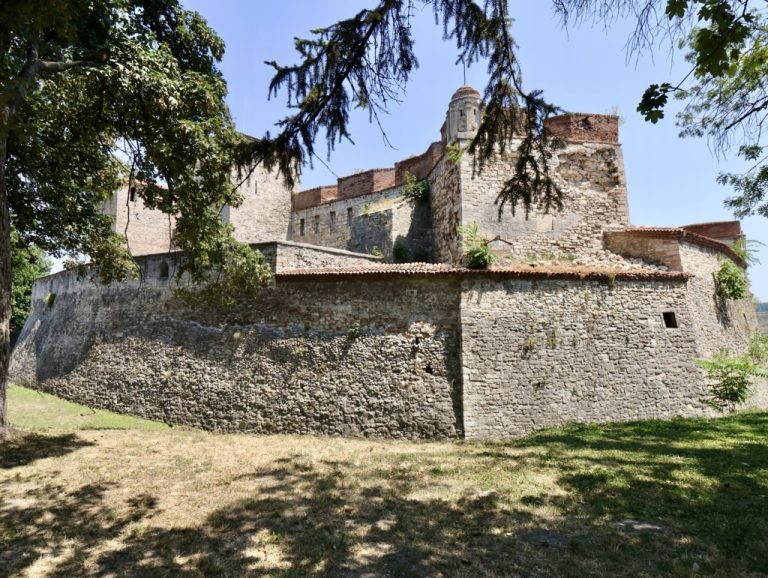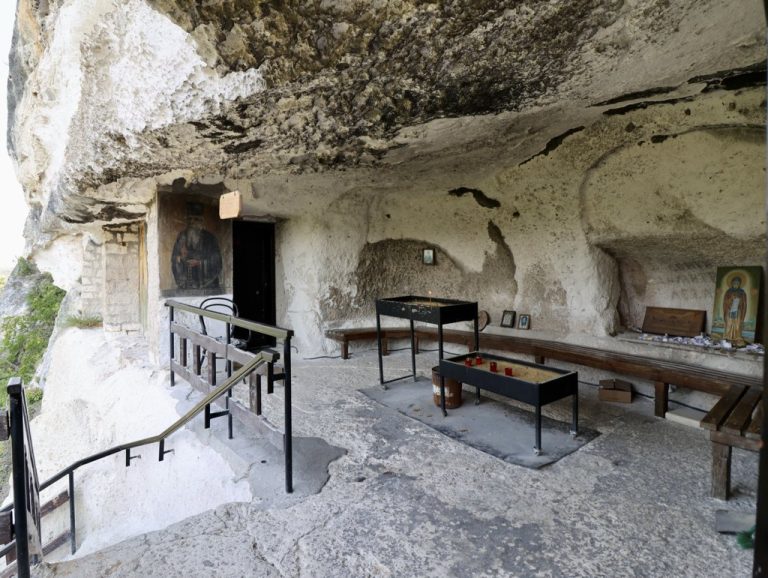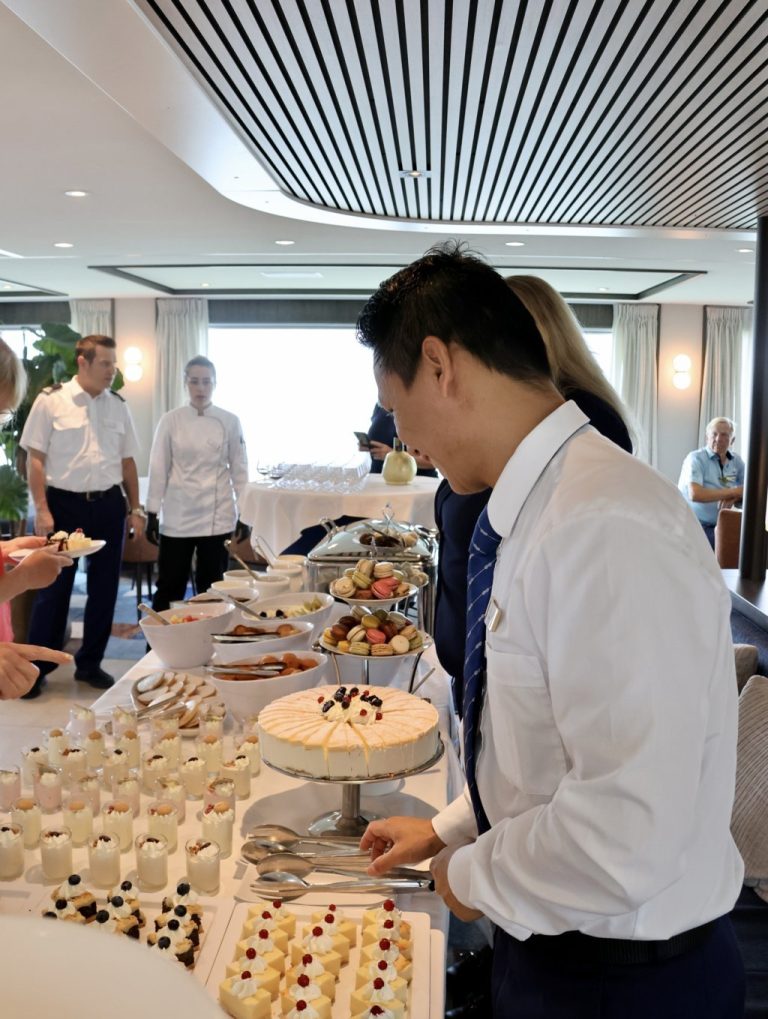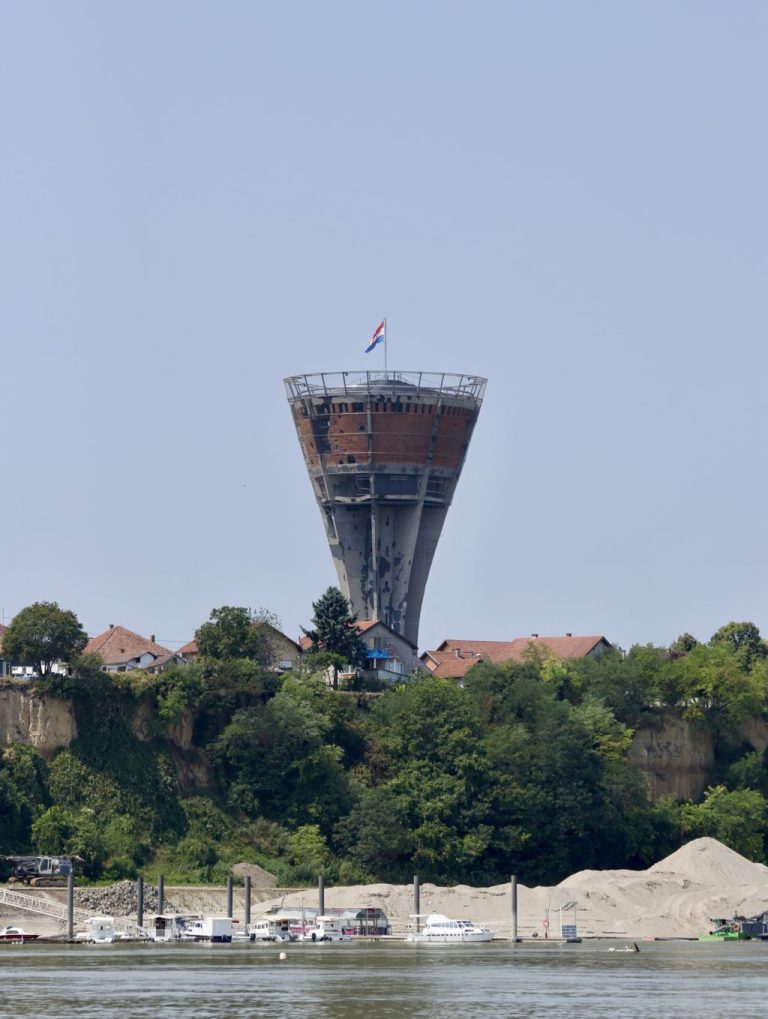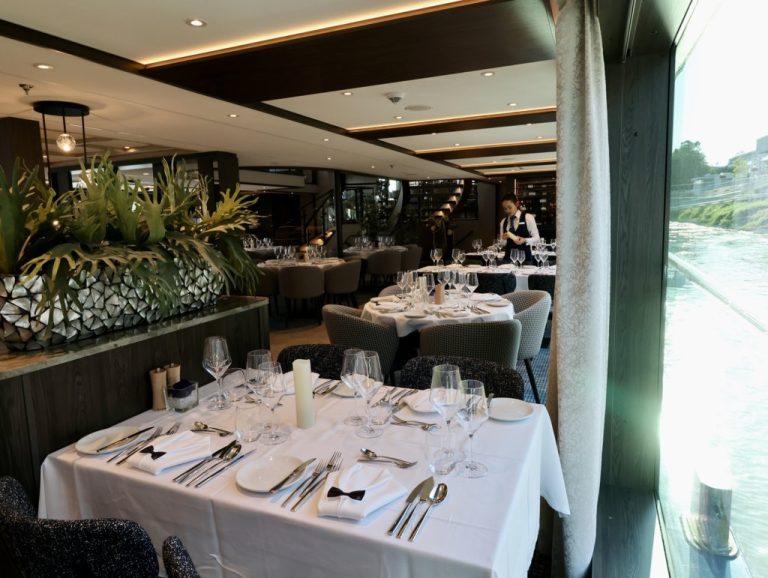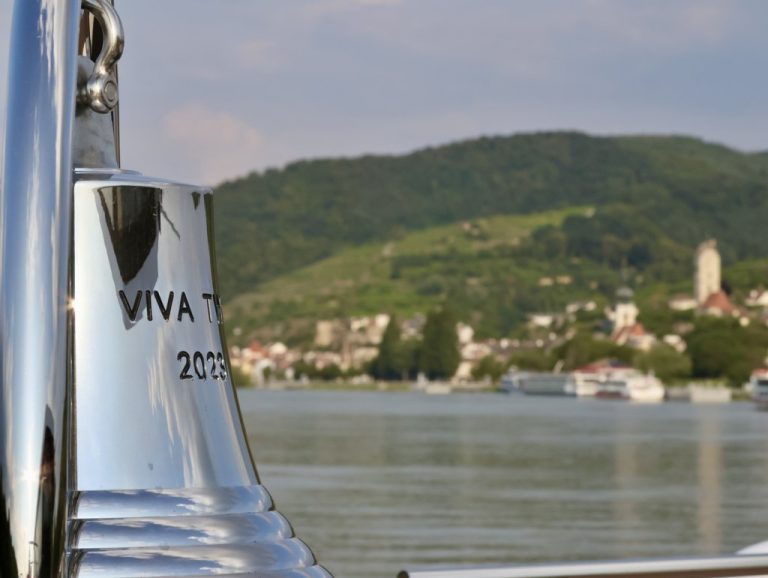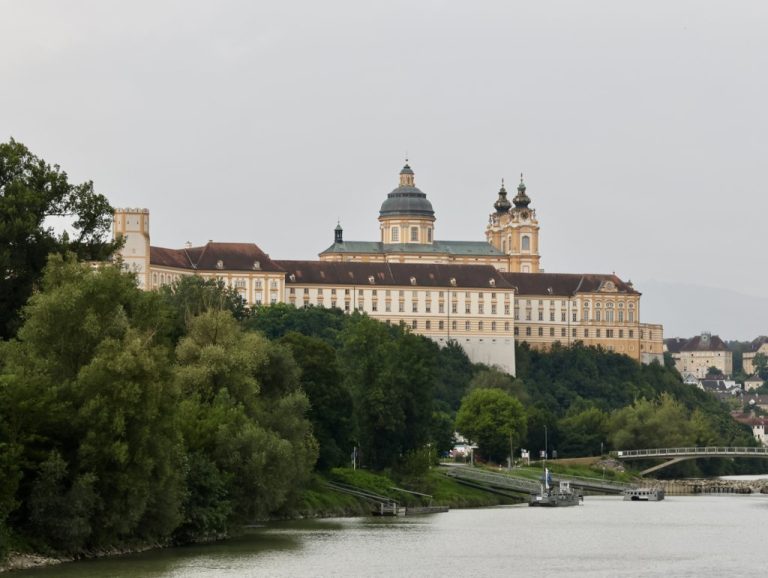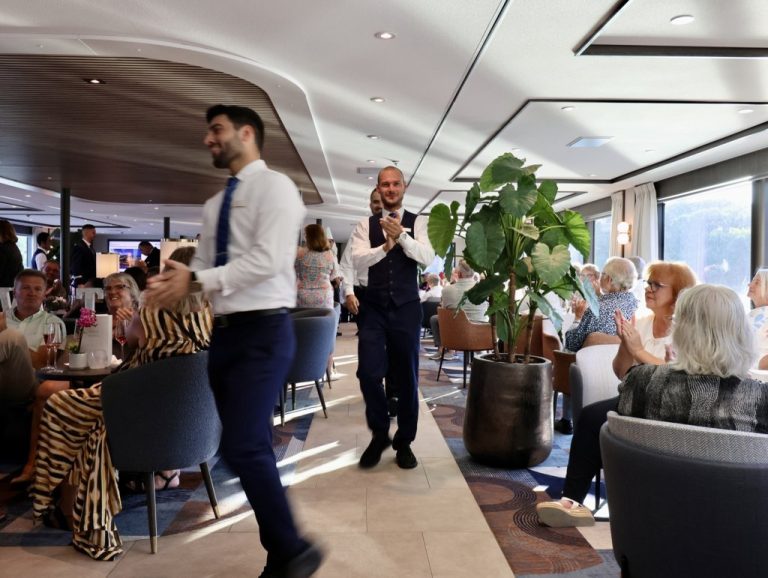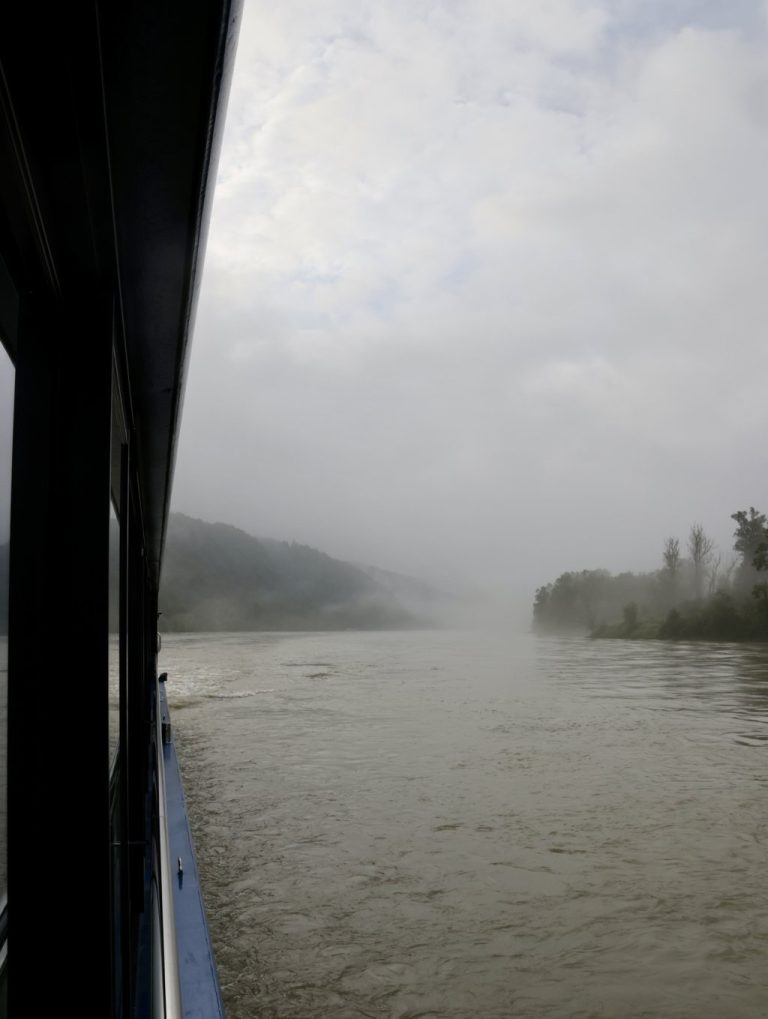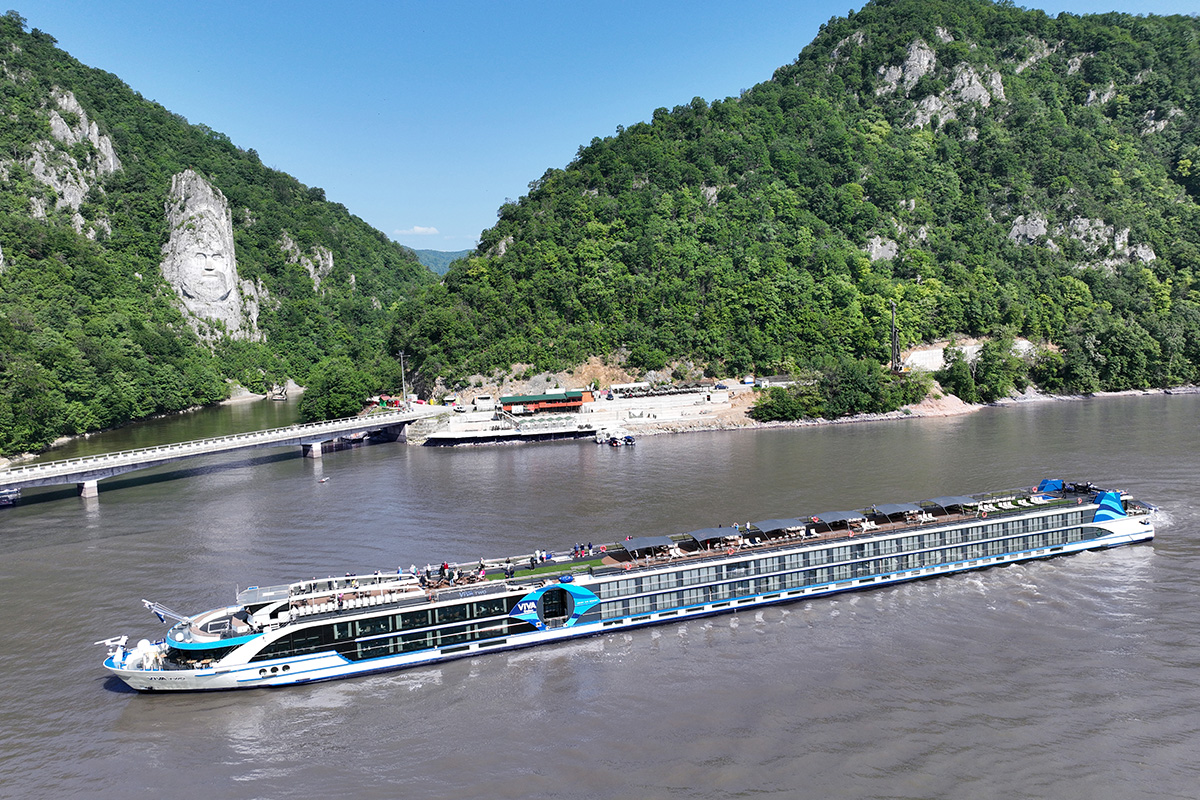On board Viva Two towards the Danube Delta
A river cruise to the east of Europe
At kilometer 2,336 – one of the longest river cruises in Europe starts in Passau (Germany). Will we make it to kilometer “0” on the Danube at the Black Sea? That remains to be seen over the next 16 days. This majestic waterway, which flows right across Europe, offers a fascinating mix of culture, history and breathtaking landscapes. Our journey of discovery begins in the three-river city of Passau, on the border between Germany and Austria. In addition to Austria, the itinerary includes stops in six other countries: Slovakia, Hungary, Croatia, Serbia, Bulgaria and Romania.
Those arriving by car, like us, can park their vehicle safely in the Globus parking lot and are taken directly to the pier in the city center by shuttle bus. The Viva Two, the newest ship in the Viva Cruises fleet, is already waiting for us there. Check-in begins at 2 p.m. and Myo, our friendly cabin steward, accompanies us to our cabin with a French balcony on the middle deck – known as the Ruby Deck. A short time later, our suitcases are already waiting outside the door to be unpacked.
Old city hall Passau Germany
VIVA TWO french balcony with two-third open door
VIVA TWO – Our home on the river
At 135 meters long and 11 meters wide, the modern river ship (maiden voyage in 2023) offers space for up to 190 passengers, who are accommodated in 95 stylishly furnished cabins. Our first impression of the 15 sqm cabin is very positive. The interior design is very stylish and shows great attention to detail. The modern comforts – from the Nespresso machine to the flat-screen TV and the exquisite RITUALS® beauty products – immediately make us feel at home. Many wooden elements as well as warm earth tones and the contrasting color blue radiate comfortable coziness. The large bathroom and the extra-large shower with rain shower function also immediately catch the eye. The highlight, however, is the three-part folding glass door of the French balcony. With two-thirds open, you feel very close to the water. And what do I hear, we’re already casting off. Now it’s time to head for the sun deck to watch the sail away past the landmarks of Passau’s old town, the cathedral, the old town hall and the castle “Veste Niederhaus” on the opposite side. After a turn, we see how the Inn and Ilz rivers flow into the Danube at the tip of the old town. We wave goodbye to the spectators on the riverbank and then get ready for dinner.
Viva Cruises has hit the nerve of the market in one respect: With its all-inclusive concept at fair prices, the cruise line is setting new standards: a large selection of high-quality alcoholic and non-alcoholic drinks is available to us all day, the mini-bar in our cabin is freshly restocked every day, and the gastronomic offering spans three restaurants on board. Wifi and gratuities are also included in the cruise price. That leaves only shore excursions or possible massage treatments, which are on top of the vacation budget.
6. One of three captains at the welcome evening
3. Show cooking VIVAs BISTRO
The culinary offer is always a mainstay of every cruise. On the Viva Two, changing multi-course menus are served in the main restaurant “Riverside” and, depending on the region visited, local specialties such as Hungarian goulash or Serbian cabbage rolls. We really appreciate the concept of a free choice of table and time, as well as the mix of starter/dessert buffet and service at the table. Further culinary variety can be found in the restaurants “MOMENTS” on the lower deck and “Viva’s Bistro” at the stern of the ship: delicious pizza and pasta as well as Italian-inspired cuisine in “Moments”. Steaks and grilled dishes, burgers and, alternately, delicious Asian dishes in “Viva’s Bistro”. Both restaurants stimulate the appetite with show cooking stations and require a reservation in advance.
The Viva Two also offers a wellness area with an infrared sauna and steam bath, a fitness center with cardio equipment and weights as well as a sun deck with a small but lovely pool. For the later part of the trip, we decided to take a bike ride along the Danube cycle path, as bikes are even available to hire free of charge. For now, we sit down in the comfortable lounge and enjoy the best view of the passing river landscape through the floor-to-ceiling panoramic glazing. We follow the cruise line’s motto “Enjoy the Moment”.
MOMENTS Restaurant aboard
VIVA TWO Bar
Excursions to Vienna and the Puszta
On the 2nd day of our journey, we stop in the garden city of Tulln. We opt for a coach excursion to Vienna, while our ship is already moving on and picks us up again in Vienna. The city tour of the inner-city ring road takes us past the main sights of the Austrian capital in a short time. Of course, a walk in the old town with a visit to St. Stephen’s Cathedral and an original Viennese coffee house is a must. On the way back to the ship, the Ferris wheel of the Prater greets you, but there is no time for that today. In the port of Vienna, piers are lined up, each occupied by several riverboats in a packet. First, we must walk through two other ships to get back to the Viva Two. This may sound unusual, but it is common practice in the big cities on the Danube and also allows us to take a look at other ships.
Our journey continues towards Slovakia, but in the evening, we look longingly at Bratislava Castle as we pass the capital. A stop there is on the program on the return journey. We continue towards Hungary, where we reach the little town of Solt on the third day. Here we disembark for a shore excursion that takes us to the wild horses of the Puszta. During a guided tour of the paprika museum in the Bakod farmyard, we learn a lot about the cultivation and processing of paprika, one of the region’s most important exports. We even get to taste paprika schnapps. I wonder if the spiciness is also measured according to the Scoville scale. In any case, my mouth is burning. In the afternoon, we reach Kalocsa, which is known as the “bell pepper capital” and for its fine flower embroidery. At the local heritage museum, we got to see the traditional art of embroidery and traditional dances.
The next day takes us to Serbia, where we dock in Novi Sad in the morning. The day starts with breakfast from the extensive buffet at “Riverside”, which has something for every taste. As we are staying on board for the morning, we treat ourselves to an Egg Benedict and a glass of sparkling wine while our riverboat continues towards Belgrade. The “white city”, as Belgrade translates, is a vibrant metropolis between the Danube and Sava rivers with a rich history shaped by many changing rulers. We explore the imposing Cathedral of St. Sava, one of the largest Orthodox churches in the world, and stroll through Ulica Knez Mihailova, the city’s lively pedestrian zone. Belgrade impresses us with its lively mix of tradition and modernity – here old fortresses such as those on the Kalemegdan plateau meet modern art galleries, and traditional restaurants stand next to trendy bars. As we leave late at night, the Brankos Bridge, illuminated in Serbian national colors, bids us farewell.
Bratislava city view from the castle
Horse carriage ride through the Puszta
Hungarian puszta horses
Kalemegdan plateau Belgrade
Paprika museum Bakod farmyard
St Sava cathedral Belgrade
The Iron Gate: a spectacular river passage
One of the absolute highlights of our trip is the journey through the Iron Gate, one of the most impressive gorges in Europe. This passage along the border between Serbia and Romania is a masterpiece of nature that leaves us speechless. The river narrows to just 150 meters wide, while steep rock faces rise to 300 meters high on both sides. The passage downstream starts very early in the morning. The Nespresso machine in the cabin comes into its own. With a coffee cup in hand from the bed, we watch as the dawn slowly disappears over the Danube. We spend most of the day on the sun deck, enjoying the natural wonder of the Cataract Passage to the full.
The Decebalus rock relief, which we see on the Romanian side of the river, is particularly impressive. At 43 meters, this monumental statue depicting the face of the last Dacian king is the largest rock relief in Europe and attracts everyone’s attention. We learn that it took ten years to carve this impressive work of art into the rock, financed privately. It is a brief but unforgettable moment as we drive past this grim-looking monument. Shortly before that, all eyes wandered to the small Mraconia monastery on the shore. One bend further along the river on the Serbian side we take a picture of the Tabula Traiana (a plaque in memory of the Roman emperor). After the Cataracts passage, the most impressive lock of this voyage awaits us. In Ðerdap 1, two interconnected chambers let our ship down first 20 meters, then another 14 meters to balance the water level on the Danube. Considering the total length of our journey of over 2,000 river kilometers (one-way), the 13 locks to be navigated seem rather small. Nevertheless, each of these passages is a fascinating technical spectacle.
Iron Gate passage with VIVA TWO
Mraconia monastery Iron Gate
Romania and the Danube Delta: a paradise for nature lovers
After passing through the Iron Gate, our journey takes us on to Romania. We make a stop in Giurgiu, from where we set off on a day trip to the capital, Bucharest. On the drive through Wallachia, our local tour guide brings the historical figure of Prince Dracula to life – it certainly sends a shiver down the spine. Once we arrive in Bucharest, we first head to the city’s most famous building, the Government Palace, also known as Casa Poporului. A central inner-city area with many Art Nouveau buildings once had to make way for the second-largest administrative building in the world. However, there are still several buildings in this style in the old town, some of which have been magnificently restored. We stop for lunch at the Hanul lui Manuc, a beautifully restored old caravanserai, where we are served a local three-course meal and a folklore dance interlude. On the way back past the triumphal arch, we stop to visit the village museum, which shows rural Romania in miniature on an area of 15 hectares. In the 45 ℃ heat, it is visibly difficult for all the guests to visit the interesting area. So, it is not surprising that many are looking forward to the air-conditioned coach and a rest. Once we arrive at the Feteşti pier, we get back on the VIVA TWO and continue towards the Danube Delta.
Serbian folklore show aboard
However, as we were informed at the beginning of the trip, our ship cannot sail to the actual turning point of the journey, to Tulcea, but instead heads for the port of Hârșova at river kilometer 251. In the following section, the Danube forms the border with Ukraine. For insurance reasons, no tourist ships are traveling on this section at the time of the trip, as the nearby Ukrainian port of Ismajil is subject to drone attacks by the Russian army from time to time. A depressing topic that we hadn’t even considered beforehand. Our excursion to the Danube Delta, a UNESCO World Heritage Site and one of the largest and most biodiverse river deltas in Europe, begins in Hârșova. We travel by bus to Tulcea, from where we take a speedboat tour through the delta.
The Danube Delta is a true paradise for nature lovers. On our tour through the small canals, we discover an impressive variety of birds, including pelicans, herons and cormorants, even though the heat and time of day mean that there are fewer of them. The untouched nature and tranquility of the delta are only interrupted by the speedboats. Particularly fascinating are the small lakes covered in water lilies, which are designated as protected areas for pelicans. When one of them takes flight right next to our boat, it’s heart-stopping. The choice of the speedboat tour with special permission to visit the pelican reserve with local supervision was more than worth it. Unfortunately, there is no time for Tulcea itself, as our bus takes us back to Hârșova straight after the boat trip. However, Viva Cruises has come up with something special and organized another free excursion to Constanța, the historic harbor city on the Black Sea, at short notice. Here we admire the magnificent casino, an Art Nouveau building that once symbolized the sophisticated life of the city and whose long renovation is now almost complete. There is also time to dip our feet in the Black Sea on Constanța’s very lively city beach. As we stroll along the modern marina with its many restaurants and bars, we treat ourselves to an ice cream for refreshment. On the coach back to Harsova, we recap the extremely exciting, packed day. Although we covered a large part of the route by bus, we are very happy with what we experienced. Despite we did not get to kilometer 0 with our Viva Two, we did get a few more kilometers by speedboat from Tulcea (river kilometer 71) on the so-called Solina arm or even to the Black Sea by bus excursion.
Kilometer signs at Danube river
Danube delta excursion by speedboat
Danube delta wildlife heron
Bulgaria: Russe and Vidin
The next section of our journey takes us to Bulgaria, where we dock in the town of Russe. Russe, also known as “Little Vienna”, impresses us with its magnificent Art Nouveau buildings and lively pedestrian zone. Our shore excursion takes us to the small Bassarbovo monastery, which was carved into a rock. We marvel at the fascinating blend of nature and architecture and even got the blessing of a monk, who´s living there. Back in Russe, the excursion concludes with a visit to the Natural History Museum, including a piano recital in a historic hall. We learn that Russe is one of the hottest cities in Bulgaria, which we can understand only too well given the temperatures of over 40 degrees Celsius.
From Russe, we continue to Vidin. This town in northwestern Bulgaria is considered one of the oldest towns in the country and is particularly famous for its medieval Baba Vida fortress. Vidin, once an important fortress town, is now a quiet provincial town that is a good starting point for an excursion to Belogradchik Fortress. This mighty Kaleto fortress sits enthroned on the northern slopes of the Balkan Mountains at an altitude of around 600 meters. After climbing the third courtyard of the fortress, a magnificent panoramic view of the hinterland opens, revealing the most spectacular rock formations in Bulgaria. The bizarre sandstone shapes are reminiscent of figures and scenes, giving them names such as “Sphinx”, “Bear” or “The Kiss”.
Baba Vida fortress Vidin Bulgaria
Bassarbovo Monastery
Return journey: Croatia, Hungary and Slovakia
Our return journey takes us back through the Iron Gate, which once again leaves spectacular impressions in the morning light. On the exit of the Cataracts route, we catch sight of Golubac Castle, which we were denied on the downstream journey in the dark of night.
The mandatory stop for customs reasons in Veliko Gradiste in Serbia takes considerably longer than planned. However, it is not possible to leave the ship, so we realize once again that Serbia is the only country on our trip, that does not belong to the European Union. But we don’t let it spoil our mood, because the second afternoon of high tea is on the agenda. What cake goes better with this trip than Danube waves? We don’t miss out on these and other delicacies as well as ice cream. For dinner, we sample the Asian menu in the “Bistro” at the stern. With a cocktail in hand and some mosquito repellent on our skin, we end the day on the sun deck. Once again, we are rewarded with an enchanting sunset that bathes the river landscape and our ship in a golden light. On evenings like this, we feel the special magic that a river cruise on the Danube creates. It doesn’t always have to be on the high seas, we think.
High Tea on board
River mood on the sundeck
Vukovar landmark watertower
In Croatia, we make a stop in Vukovar, a city that was badly destroyed during the Croatian War of Independence. We visit the baroque Eltz Castle and stroll through the town before fighting off the enormous heat with a cool drink on the jetty. The reconstruction of Vukovar is a moving example of the power of reconciliation and the will to restart again after difficult times.
Our journey continues to Budapest, the “Pearl of the Danube”. The Hungarian capital welcomes us with moderate weather, which unfortunately leaves its magnificent buildings, including the Chain Bridge and the Gellert Baths, gray and grey. So, we focus on interior sightseeing, such as the impressively marbled St. Stephen’s Basilica, and visit the traditional Gerbeaud coffee house for a cappuccino and pancakes. But the evening departure from Budapest is more than conciliatory: the city is brightly lit as we make our way under the bridges on the Viva Two, past Castle Hill and the Fisherman’s Bastion. Almost all the guests are standing on the sun deck and we experience a goosebump moment as we pass the majestically illuminated landmark, the government building. Sometimes you only discover the beauty of a metropolis at night.
The next stop is Bratislava, the capital of Slovakia. We decide to explore the city on our own and take the rental bikes for a tour of Bratislava. From the castle, we enjoy a wonderful view of the city and the Danube before heading to the park by the government building. Bratislava is a charming city with a well-preserved old town, where we soak up the relaxed atmosphere over an ice cream. Back on board, the gala dinner awaits us as the gastronomic finale of the voyage. Before we indulge in the 7-course menu, the entire Viva Two team thanks the guests and we give the crew a big round of applause. The festive atmosphere, the excellent cuisine and the stylish entertainment make this evening another highlight of the trip.
Getting ready for gala dinner
Scenic views in Austria near Krems
VIVA TWO in Bratislava
Austria: One last look at the Wachau
Before we return to Passau, we travel through the green Wachau region in Austria with its vineyards and charming little villages set against rolling hills. A morning of sightseeing on the river before we dock in Melk for the last stop of the trip. But our attempt to cycle along the Danube cycle path is abruptly interrupted by a heavy downpour. Therefore, we turn our attention to Melk with its famous Benedictine monastery, which towers high above the Danube and offers breathtaking views. The monastery garden with its wonderful flower arrangements and baroque pavilion with exotic frescoes catches our eye. It’s time to get back on board. On our farewell evening, bar manager Volkan puts on a flair show and whirls champagne bottles through the air. An impressive river cruise slowly comes to an end. In keeping with the farewell mood, Germany greets us in the morning with a fog-covered Danube. In Passau, we say “Servus” (goodbye in the Bavarian language). On our disembarkation, we are sure that we will be traveling with Viva Cruises again in the future.ù
Abbey Melk in Austria
Farewell thank you to the crew
Fog-covered Danube while arriving in Passau Germany
Conclusion
With its all-inclusive concept, Viva Cruises is an attractive addition to the river cruise market. The offer of modern ships in stylish design appeals to a younger target group. The strategy, which is now increasingly geared towards internationalizing the guest structure, is bearing fruit. In addition to a large proportion of Germans, guests from England, the Netherlands, Scandinavia and even Brazil and Portugal are also on board.
The 16-day voyage on the Viva Two to the Danube Delta and back is more than just a cruise – it is a voyage of discovery through the diversity of Europe. The mixture of cultural experiences in the capital cities, impressive natural spectacles and the enjoyable life on board makes this trip an unforgettable adventure. We will remember it for a long time to come. If you want to experience the Danube in all its splendor, this cruise is an absolute must.
Don’t miss more updates, news and reviews about Viva Cruises on Cruising Journal with photos, video and cruises on offer.

